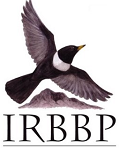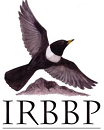.
.
.
.
.
Search is on for Nightjars in Tipperary
Nightjar is an extremely rare bird in Ireland – to the point that there have been no breeding records for a few years now. There may still be some pairs clinging on though, so if you have suitable habitat near you please do check it out at dawn or dusk and let us know how you get on! Suitable breeding habitat includes clearfell areas, usually in conifers (often Scots pine), where there is a good litter on the ground
The BirdWatch Ireland Tipperary Branch will be carrying out coordinated surveying for Nightjar this year – see below from BirdWatch Ireland’s John Lusby:
“The wide-mouthed, insect-eating Nightjar was once widespread throughout Ireland, but are now close to extinct as a breeding bird and are Red-listed on the Birds of Conservation Concern in Ireland. Small numbers of Nightjar arrive from Africa in late May, and nest in young forests at the edge of upland areas in the south of the country. Over the past 15 years, the forested foothills of the Galtees and Knockmealdowns in County Tipperary and Waterford have held more breeding records of Nightjar than any other part of the country. It is hoped that Nightjar still remain in these areas and this summer BirdWatch Ireland and the BirdWatch Ireland Tipperary Branch are undertaking a survey for Nightjars which aims to establish breeding. A team of survey volunteers are conducting dusk and dawn visits to areas of suitable breeding habitat for Nightjar to detect their distinctive ‘churring’. We are also looking for records of Nightjar elsewhere in the country to try and build up a picture of their occurrence and to confirm breeding.”
Even if you don’t find Nightjar during your survey, you may come across some other under-recorded breeding species such as Woodcock and Long-eared Owl. If you have suitable habitat near you, please do give it a few hours in the next week or two and let us know how you get on!
.
.
.
.
.

Nightjar at one of the last confirmed breeding sites, in Co. Tipperary (Mike Brown)
New study highlights continued decline of Ireland’s breeding Ring Ouzels
A new study, published in the most recent edition of the Irish Birds journal, has found that Ring Ouzel continue to decline in one of their last remaining breeding areas in Ireland. The study, by Dr. Allan Mee, found that the number of ‘apparently occupied sites’ in the MacGillycuddy’s Reeks (Co. Kerry) have declined over the last 10 years, with few remaining. As part of the survey, Dr. Mee documented the ecology and habitat associations of this remnant population, in the hope that urgent conservation measures and appropriate habitat management may yet retain and restore the numbers of this enigmatic upland bird species.
The Irish Rare Breeding Birds Panel would like to remind people of the importance of submitting records of rare breeding birds, such as Ring Ouzel. Records of rare and scarce breeders, as well as non-native species and potential colonists, can be submitted via the ‘Your Records’ section in the menu bar above.
The full paper from Irish Birds is available to download via the link below:


IRBBP update
Some interesting records just in…
- Ring Ouzel – unfortunately nothing as yet from Wicklow or Kerry, but a lovely record has come in from Donegal!
- Wicklow – Wood Warblers seem to be lacking this year but some reports on Redstarts
- Garden Warbler in Galway
- Reed Warbler in Cork
- Woodpecker and Whinchat in Antrim

Breeding waterbird alert…
As the records start to come in, a few include some nice breeding duck records. With hatching underway, it is a good time to get confirmation of breeding. IRBBP is especially interested in records of breeding Garganey, Shoveler and Pochard. You would be very lucky to come across breeding Wigeon, Pintail, Goldeneye or Scaup.
As for Common Scoter and Goosander – both species remain very localised – while Goosander seems to be holding its own, and has done for many years in a small number of locations, breeding scoter are in a very poor state, suffering from the effects of predation.
IRBBP welcomes records of other scarce breeding ducks, such as Gadwall and Teal. And please also keep an eye out for Greylags and Canada Geese.
And please remember – we would be grateful for any historical records you may have of these and other rare breeders.

Migrants off to a slow start…
With that incredibly cold period that lasted well into the early part of the spring, not only has there been a delay in arrivals, but it certainly seems that numbers may have been affected this year. BirdTrack (birdtrack.net) is already showing what appears to be erroneous patterns of occurrence in several of the sub-Saharan migrants, showing late arrival, and a decline and what seems to be an earlier drop-off, in reporting rates.
So what does this mean for our rare breeding migrants?
The patterns shown in rare breeding sub-Saharan migrants such as Wood Warbler, Garden Warbler, Nightjar and Whinchat across Britain and Ireland this year, are similar to some of the more widespread species such as Willow Warbler. But because there are fewer of them, it means that we might struggle more than usual to find these species this year. So all hands on deck are needed. Click on the links above to see where coverage is especially needed this year, and please get in touch and let us know you can help out.

New Online Platform for IRBBP
A new quick and user-friendly portal is now available for your data this season. Thanks to the support of the NPWS Data Team for compiling this super new tool that can even be used directly from the field! We look forward to lots of records this season. Access this online submission form through Google Chrome.

IRBBP toolkit now available – please get involved in surveys this year!
We have developed a suite of tools that will hopefully help with surveys of rare breeding birds this season – check out our IRBBP toolkit here. Note that our species profiles are in development – and should be completed in the coming days.

Workshop Note and Species Maps
We are hugely grateful to all who attended these workshops, for your ideas and enthusiasm. In the coming weeks, we will be furnishing this website with a number of resources, including a species-county list that will help target the surveywork and guidelines on the specific survey methods. Meanwhile, a short note on the workshops is now available. You can also view the species maps presented on the day here.

Final details for Workshops in Dundalk and Limerick
The IRBBP workshops will take place on Wednesday 14th February at the Ramada Hotel in Dundalk and on Sunday 18th February at the Maldron Hotel in Limerick. Both workshops will run from 13:30 to 17.30 approx. The agenda for the workshops is now available here.

Upcoming workshops 2018
IRBBP will host workshops in January and February 2018. These events aim to promote the work of the panel and to encourage submissions of rare breeding birds. We hope to identify other potential sources of records on rare birds and to discuss mechanisms for data collation.

Welcome to the website of the IRBBP
Please continue to check back over the coming months. We hope to develop the site over time with further details about Ireland’s rare breeding bird populations.

